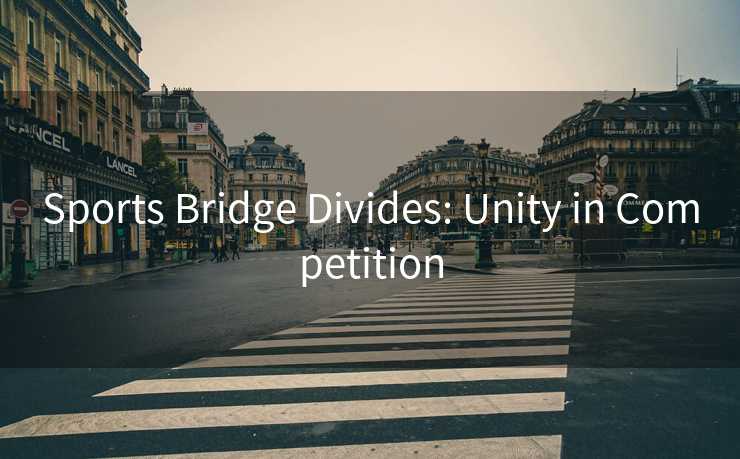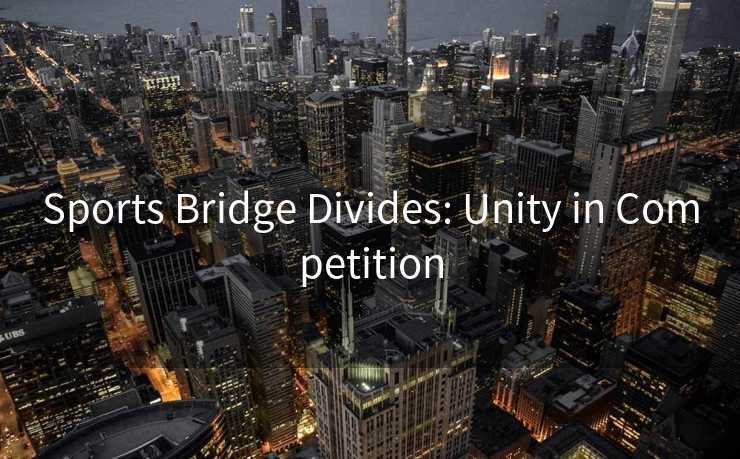Sports Bridge Divides: Unity in Competition
In an era marked by cultural, political, and social fragmentation, sports emerge as a universal language that transcends boundaries. From ancient Olympic Games to modern global tournaments, athletic competition has consistently demonstrated its power to unite diverse communities, heal historical wounds, and foster mutual respect. This article explores how sports act as a bridge between divided groups, highlighting historical precedents, contemporary examples, and their enduring impact on society.


The Historical Role of Sports in Uniting Nations
Sports have long served as a catalyst for peace and unity, dating back to ancient civilizations. The Ancient Olympic Games, held in Greece from 776 BCE to 393 CE, were more than just athletic contests—they were a truce where warring city-states set aside conflicts to compete in events like running, wrestling, and chariot racing. As depicted in historical records (see Figure 1), athletes from Sparta, Athens, and other rival states gathered at Olympia, symbolizing a shared humanity despite political tensions. This tradition laid the groundwork for sports as a tool for reconciliation, proving that even in times of strife, common goals can override division.
Fast-forward to the 20th century, and sports continued to play a pivotal role in healing national rifts. The 1978 FIFA World Cup in Argentina, for instance, occurred during a period of military dictatorship, yet the tournament became a unifying force for citizens seeking hope and connection. Similarly, the 1995 Rugby World Cup in South Africa—held just a year after the end of apartheid—saw the national team, known as the Springboks, win the title. Their victory, led by Nelson Mandela (who wore the team’s jersey during the final), became a symbol of racial reconciliation, demonstrating how sports could bridge deep-seated societal divides.
Modern Examples: How Sports Transcend Borders Today
In the digital age, sports remain a powerful unifier, with global events like the Olympics and World Cups bringing billions together. The 2022 Beijing Winter Olympics exemplified this, as athletes from 91 nations competed under the theme “Together for a Shared Future.” Despite geopolitical tensions, the games showcased collaboration: North and South Korean athletes marched under a unified flag in the opening ceremony, while Russian and Ukrainian athletes competed side by side in events like figure skating. As shown in Figure 2, these moments of solidarity highlighted sports’ ability to prioritize human connection over conflict.
Beyond international competitions, local sports initiatives are fostering unity in divided communities. In Northern Ireland, for example, cross-community football programs bring Catholic and Protestant youth together, using sport to break down sectarian barriers. Similarly, in Brazil, favela-based soccer leagues provide opportunities for marginalized youth, reducing gang violence and promoting social inclusion. These grassroots efforts prove that sports’ unifying power extends beyond elite athletes to everyday people.
Beyond the Field: Sports as a Tool for Social Change
Sports do not merely unite people in competition—they also drive meaningful social change. Athletes and teams often leverage their platforms to advocate for equality, justice, and inclusion. The Black Lives Matter movement, for instance, gained momentum when NBA players staged walkouts during playoff games in 2020, demanding action against police brutality. Their actions sparked global conversations about racial injustice, showing how sports can amplify marginalized voices.
Women’s sports have also emerged as a force for gender equality. The FIFA Women’s World Cup and WNBA have challenged stereotypes, inspiring young girls worldwide to pursue athletic dreams. Teams like the U.S. Women’s National Soccer Team have fought for equal pay, turning sports into a battleground for gender rights. These examples illustrate that sports’ impact extends far beyond the scoreboard, influencing societal norms and policies.
Conclusion: The Enduring Power of Sports to Heal
From ancient Greece to modern-day tournaments, sports have consistently proven their ability to bridge divides. Whether through historical truces, contemporary global events, or grassroots initiatives, athletic competition fosters empathy, collaboration, and shared purpose. As we navigate an increasingly polarized world, investing in sports—whether as participants, fans, or supporters—offers a path toward unity. By embracing sports’ unifying spirit, we can build more inclusive societies where diversity is celebrated, not feared.
In the words of former Olympian Jesse Owens, “The purpose of athletics is not just to win, but to reach within the depths of your soul and bring out the best of yourself.” Let us harness this spirit to bridge our differences and create a more connected world.
教练团队
新闻资讯
站点信息
- 文章总数:1
- 页面总数:1
- 分类总数:1
- 标签总数:0
- 评论总数:0
- 浏览总数:0